In this work, we explore the challenges in designing a practical wearable backscatter reader that operates within the form-factor and power constraints of a smartwatch-class device, and the opportunities that such a device presents for monitoring interactions. Our work is inspired by early work on the design of glove and bracelet-sized NFC readers for activity recognition iBracelet. However, an NFC-based approach has two key limitations: a) NFC operates at much lower frequency than UHF RFID and therefore does not provide useful phase information that is crucial for a range of interactive RFID-based applications, and b) NFC operates at short ranges of a few centimeters with smartwatch form-factor loop antennas, and is therefore more suited for intentional interactions (e.g. credit card payment). In contrast, UHF RFID readers operate at a wavelength of roughly 30cm and does not have the inherent range limitations of NFC, which makes it is more suitable for measuring tactile interactions with tagged objects. We refer to our design as WearID.
Hardware
The first key consideration in the design of WearID is optimizing power consumption. Here is how the hardware looks like. The form factor and weight make the system suitable to be worn on wrist.


Hardware design files can be found here.
Body adjacency effects
To design a wearable device requires studying the effects of body on the system carefully. Body mostly affects the RF channel and impedance of RF components which results in reduction of output power. In following figures, we have measured spatial locations where RF power generated by the reader drops down to -25 dBm. Figure on the right shows the coverage for WearID in absence of hand, and in left figure, the hand is presnet inside the watch and you can see how much attenuation it causes.

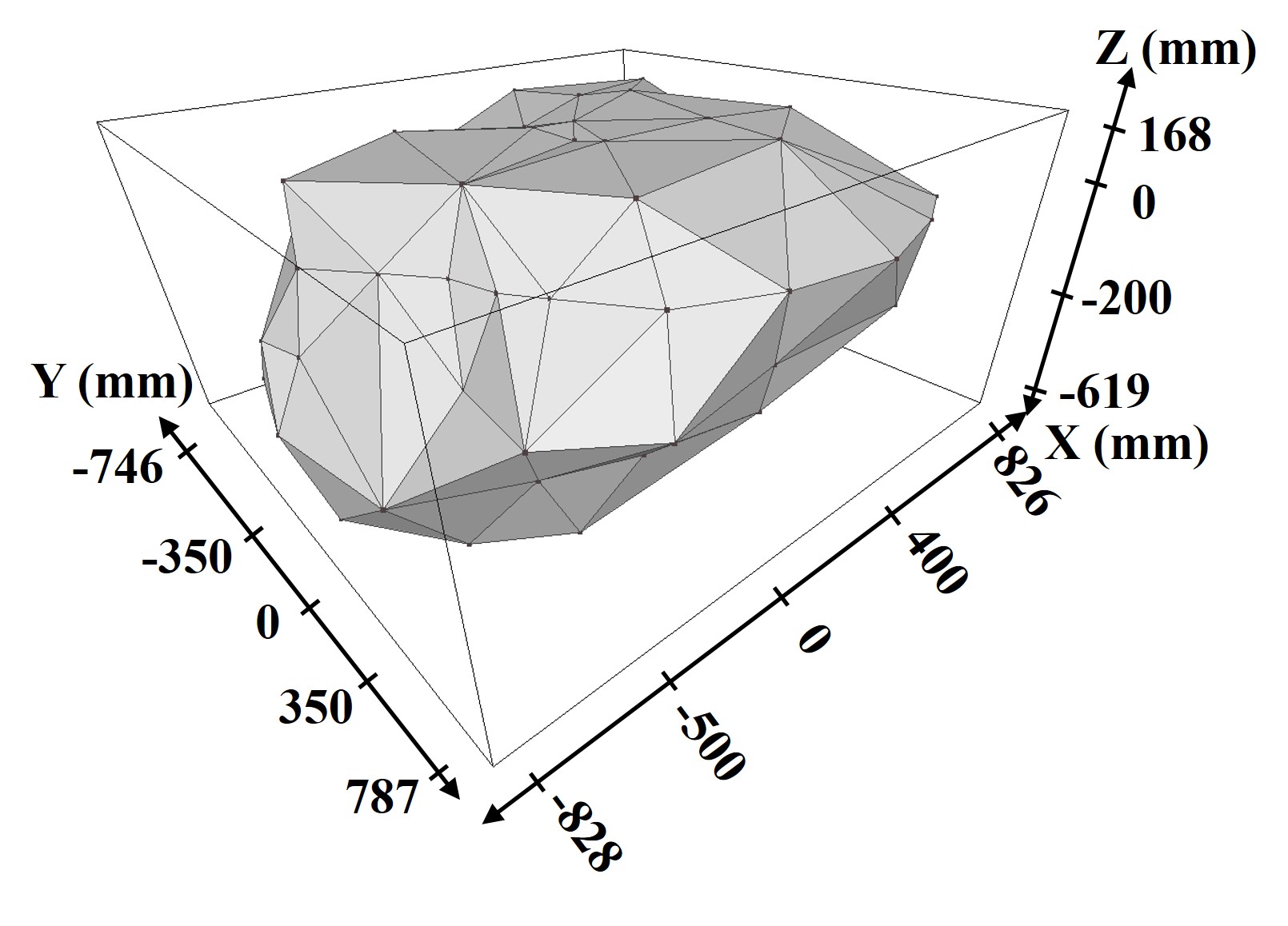
Feature extraction
Figures below show an example of segmentation, digital filtering, envelope detection, and feature extraction.
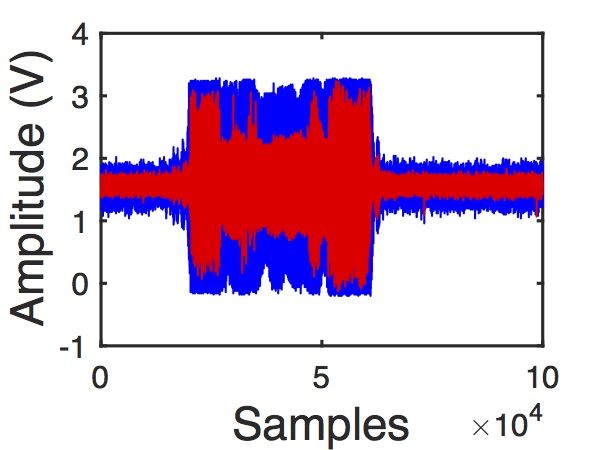
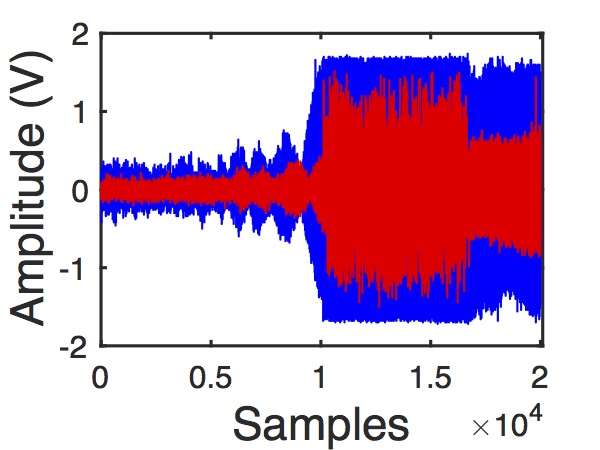
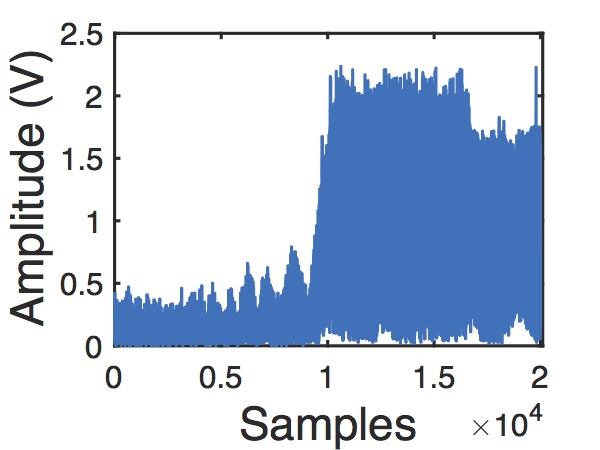
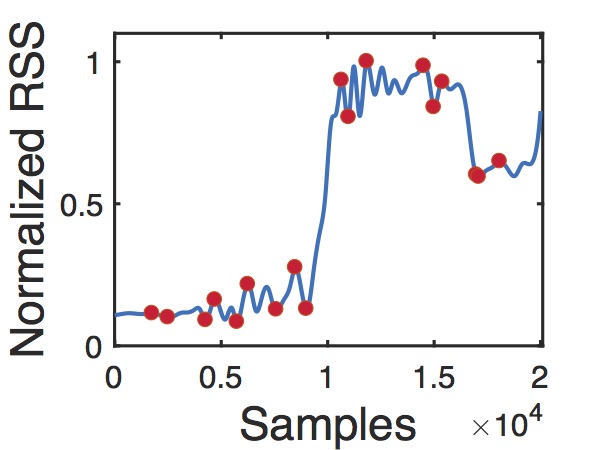
System is able to distinguihs between grabbing a tagged object, releasing a tagged object, touching a tag, and passing by a tag, with 86% accuracy.
People
- Ali Kiaghadi
- Pan Hu
- Jeremy Gummeson
- Soha Rostaminia
- Deepak Ganesan